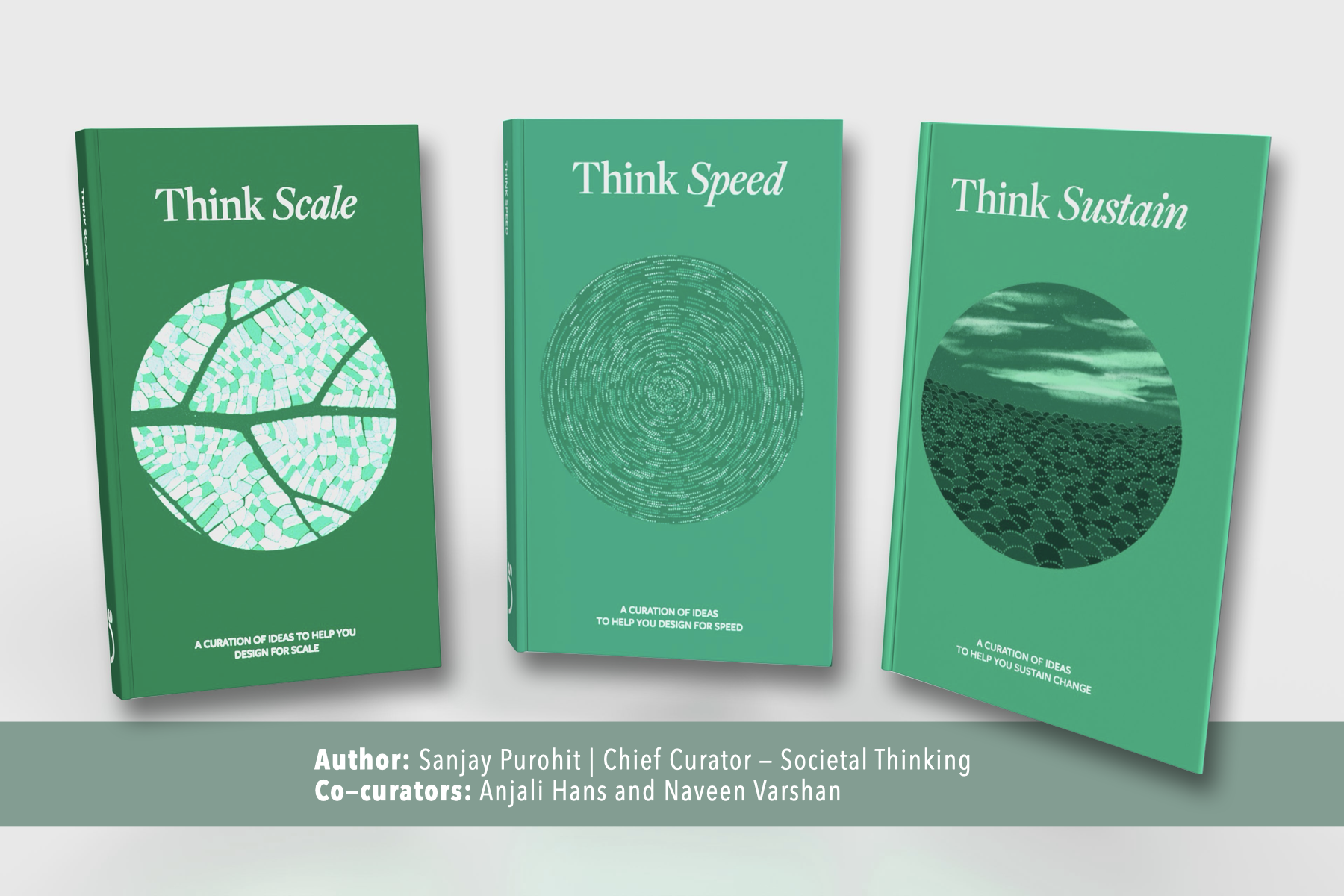
Imagine if a car company’s marketing strategy was to send drawings of cars to all its dealerships and invite customers — and then say, “Please give me 95% of the cost of building this car as an advance and I will then deliver this car to you in 5 years”. When philanthropists or people in the social impact sector ask “Where is the buy-in for this product?”, it is the same as asking “I have provided the drawing, where is my customer?” Like cars, Shared Digital Infrastructure has to be built in advance for reform champions to test drive it the minute they decide they need a car.
Shared Digital Infrastructure is an important aspect of making sure that extremely desirable changes in the Indian State move from “too big to solve”, “too difficult to do” and “we can’t do it in 24 months” to a feasible proposition. I am, therefore, of the view that reform champions in government will benefit greatly from having ready access to Shared Digital Infrastructure that they can then leverage and customise as necessary.
How governments can benefit from Shared Digital Infrastructure
There are three key ways in which the Indian State would benefit from the solutions made possible by shared digital infrastructure — both as smaller Lego bricks that can be reused or recombined in diverse settings, as well as overarching unified Societal Platforms that distribute the ability to solve and crowdsource innovation.
First, Shared Digital Infrastructure can provide tools that enable us to generate information that may help us diagnose the problem correctly.
Digital technologies which back information systems can improve our understanding of various constraints by facilitating the collection of relevant and usable data.
The State is made up of people. Public officials, of course, work within and are shaped by processes, systems and practices — which together make up the State. The individual public official is at the heart of the administrative machinery and their performance depends on the interaction between their intent to achieve organisational goals and the constraints they face in doing so. Shared Digital Infrastructure can help us map these and subsequently, deploy products and tools that can track and produce logs, time-series data, and other metrics that enhance the ability of supervisors (and ideally, citizens) to know what is going on.
For example, data collected in public hospitals on disease could be used to predict how many healthcare workers and machines hospitals might need in a year’s time, allowing for timely and well-thought-out decisions.
Second, SDI can provide solutions to simple as well as complicated problems.
Let’s look at smart payments. Smart payments work on the principle of “if this, then that”. For instance, if the officer directly responsible has certified that the supplier has delivered the product and if the person required to verify the quality of what has been supplied does so, then payment is released. Smart payments can sharpen accountability, promote transparency and decrease administrative burden.
Third, by making scarce essential resources such as expertise, information or assessment capability, Shared Digital Infrastructure can enable officials to deploy solutions even in the absence of local capabilities for certain things. It can help the State to distribute the ability to solve problems to those closest to them.
For example, the government’s National Programme for Civil Services Capacity Building (Mission Karmayogi) is an important example of this. By seeking to facilitate officials’ access to on-the-job training, Mission Karmayogi enables officials to develop the means to perform their jobs well. Operated under the Department of Personnel Training (DoPT), the Integrated Government Online Training (iGOT) platform provides an online marketplace for impactful courses that those with identified competency gaps can use. Competency building courses (provided by universities and training academies) will be listed on the platform, and once individual ministries, departments, and organisations have identified the competencies that their officials need to develop, they can leverage iGOT to compare prices and impact scores to identify the course and provider that best meets their training requirements.
In its fully realised form, by making a repository of training materials that can be accessed through a smartphone available, iGOT can equip community health workers to build their knowledge about the nutritional needs of infants or teach them communication methods to help convince unwilling parents to immunise their children. iGOT has the potential to impact the means of officials at all levels of government and, in turn, improve the capacity of the Indian State to effectively discharge its responsibilities to its citizens.
Shared Digital Infrastructure = Scale
Shared Digital Infrastructure is a worthwhile approach wherever there is something to be delivered at scale, which requires uniform quality of distribution but diversity in its different aspects, and where technology can be an enabler. In this way, it can help make the Indian State more agile and responsive to citizen needs. This infrastructure will not teach India’s teachers how to educate their students but it will help us make sure that the teachers do actually show up to school, that they are not overburdened by administration when they do, and that they can access resources that will help them do their jobs better (think of the work that EkStep does).
It is time to build out the Shared Digital Infrastructure we believe in so that we are ready whenever the Indian State is.
Learn more about Societal Thinking here.
 Back
Back


